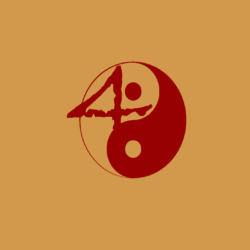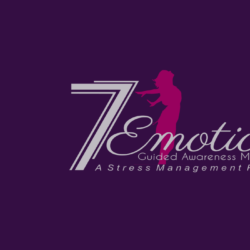Menstruation is an important indicator regarding feminine health. Under oriental medical guidelines good health can be compared with a smooth flowing circulation within the body in reference to the many bodily functions. Diet, mental-emotional  aspects, bowel habits, posture, breathing, environmental conditions, lifestyle, and cardio output are some of the many aspects that rely on smooth circulation to efficiently function properly. The menstrual cycle is no exception. Physical trauma, emotional disorders, blood disorders, diet and lifestyle can obstruct circulation and induce an imbalance in the menstrual cycle.
aspects, bowel habits, posture, breathing, environmental conditions, lifestyle, and cardio output are some of the many aspects that rely on smooth circulation to efficiently function properly. The menstrual cycle is no exception. Physical trauma, emotional disorders, blood disorders, diet and lifestyle can obstruct circulation and induce an imbalance in the menstrual cycle.
The female reproductive cycle has two components: the ovarian cycle and the uterine cycle. The ovarian cycle relates to the changes in the ovary and the development and release of the ovum or egg over a 28-day monthly period. The uterine cycle, also called the menstrual cycle (the Period) relates to the changes over a 28-day period occurring to the endometrium or the tissue layer that forms the inside wall of the uterus. The secretion of two hormones, estrogen and progesterone by the ovaries causes endometrial changes. The ovarian cycle controls the uterine cycle. If that’s not complicated enough, the ovaries are controlled by the pituitary gland, which in turn is controlled by the hypothalamus, both located and associated with the brain respectively. Are you beginning to see how important the circulation of components such as hormones, blood and energy play a vital role?
The menstrual cycle has three phases: the menstrual phase, the proliferation phase, and the secretory phase.
The Menstrual Phase: this is the period of bleeding. It begins on the first day of bleeding and usually last 3 to 5 days. The endometrial lining and blood that has formed a nourishing and supportive layer for the reception of a fertilized egg is leaving the uterus in preparation for a new layer to form.
The Proliferation Phase: this phase begins with the end of the menstrual phase and continues until mid-cycle. Repair and growth of the endometrial lining occurs. This growth is primarily controlled by the release of estrogen from the ovaries.
The Secretory Phase: this phase begins around mid-cycle during ovulation or the release of the egg and lasts about 14 days and then ends the uterine/menstrual cycle. During this phase the ovaries predominately release progesterone, which helps thicken and nourish the endometrium and awaits the arrival of the ovum or egg.
No that we’ve have laid the groundwork let’s review in plain and simple terms. Day 1 of the menstrual cycle is when bleeding begins. This process known as the Menstrual Phase is a sort of “cleaning out” of the uterus. During the next phase (Proliferation) the uterus renews the lining of the uterus (endometrium). During the Period and for about a week after the Period is an important time to guard your health. This is what we call in oriental medicine a state of deficiency. Great resources are being drained from the body so a new cycle can start. New blood must be generated to form a new endometrial lining in the uterus. The uterus is like a cup. The usefulness does not belong to the cup but the space within the cup. What fills that space determines its value. Knowing that this is a time of deficiency helps you understand that you must work to nourish yourself and fill the body in a positive way to promote health, balance and support proper circulation. Eating blood-building foods such as green leafy veggies, iron supplements, B 12, or red foods such as cherries are some examples of good diet practices after your period. The next phase being the Secretory Phase occurs at ovulation or at mid-cycle with the secretion of an egg from an ovary. The secretion of progesterone during this phase sustains the endometrium and will last 14 days before the bleeding period returns to clean out the uterus and repeat the cycle. If you aren’t aware of when you ovulate try mapping out your menstrual cycle. You have to know the length of the complete cycle (for example 28 days). Count ahead on a calendar 28 days starting with the first day of bleeding and then subtract 14 days (May 1 à count 28 days = May 28 – 14 = May 14). This would be the optimal time to conceive so plan accordingly. During the Secretory Phase it is important to know that this is a natural state of stagnation, which blocks circulation. Stagnation is an excess condition and can be alleviated through movement. Most women don’t display much trouble here but some women during this phase experiences PMS – Pre-Menstrual Syndrome characterized by moodiness, cramping, and breast tenderness. The endometrium layer is full and waiting to be used – Hello – I’m waiting to conceive! This is a state of stagnation similar to a traffic jam. Frustration builds because nothing is moving. When the bleeding starts, movement occurs and the pain usually subsides. This is why exercise can help alleviate PMS. Exercise improves circulation. Mental-emotional aspects can be thought of in this way as well. Make attempts to free yourself from frustration and irritability by keeping things moving. The next time you find yourself in conversation that turns into a disagreement you can simply try to moderated your opinion, open your mind to their opinion or changed the subject to keep the conversation moving and avoid an unnecessary argument. Arguing is nothing more than pure stagnation much like a pressure cooker – just lift the lid to release the pressure and the stagnation will move. If these suggestions aren’t helping you can look into acupuncture treatments and herbal supplements to help moderate symptoms during PMS.
Sum it up please! Stagnation is more likely to occur before your period. Keep things moving, stay active, avoid heavy foods that will cause more stagnation, and avoid other stagnate situations if you feel you can’t moderate the situation. During your period take time to relax – let go and let it flow. The time after your period is a time of rebuilding. You’re body is in a more deficient state. Be kind to yourself, nourish your body and spirit, and eat well. The more you nurture and become more aware of your cycle the smoother it will flow.
Please download the menstrual chart and use it as a tool to monitor your menstrual cycle. The menstrual cycle can be looked at as a blessing. It is an important cycle that can indicate the state of your health. Changes in the menstrual cycle left unchecked could lead to further complications in the long run as time goes by. Seeking medical advice early on can help in the prevention of more complicated issues.
The outside world is the part of our life cycle where the fruits of our efforts are shown but the inside world is the root of where the cycle begins. No root, no fruit. Focus your awareness inside and let it flow smoothly.
Christopher Carlow, D. Ac. Date: 7/30/05








